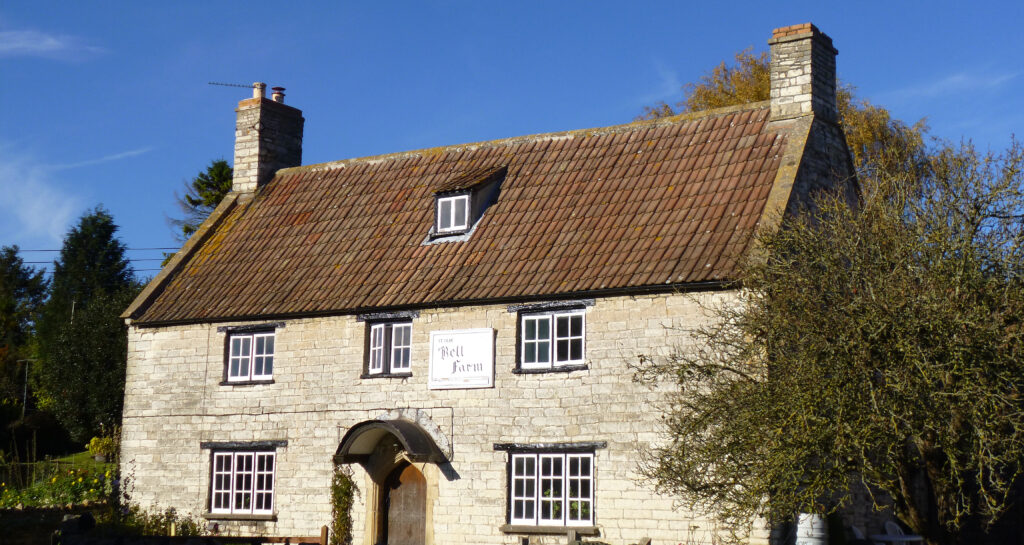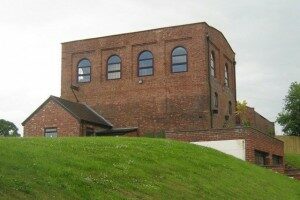In the year 2000, the Parish Council asked that the name of Pensford, which is far better known than that of Publow, should be added to Parish of Publow, the name by which the parish had been known, probably from the 12th Century.
Pensford is a large village, which began as a settlement where the ford carrying the main road from Bristol and the north to the south coast crossed the river Chew. Until 1947, a part of the parish to the west of the river including about a third of the village was in the parish of Stanton Drew.
After nearly fifty years of consultation the boundary of Publow Parish was moved to the west to include the area of Pensford around the Church and Salter’s Brook, and the eastern part of Stanton Drew known as the Tithing of Belluton. So the village of Pensford was united. The boundary had been marked by a large stone in the parapet of the old bridge that was washed away in the great flood of 1968.

In the East of the parish is the large and attractive hamlet of Woollard, which is divided in two by the river that forms the boundary between Publow and Compton Dando. There are several buildings of historical interest, notably Old Bell Farm and the Chew Bridge Cottage lying on either side of the eastern approach to the bridge. Both are of 15th Century origin. Paradise Row is a pretty row of cottages.

The Manors of Publow and Woollard had been part of the holding of the Abbey of Keynsham but had been sold by King John to the St Loe family. It had then passed to various lay landowners. Sometime during the early years of the 17th Century, the Pophams of Hunstrete had become Lords of the Manor and would so remain so until 1911 when the estate was sold. Many villagers were able to buy the properties that they lived in and the farms passed into private ownership. The tithing of Belluton, which was a Domesday Manor and the manor of Pensford, were always held by lay landowners.
Looking at the parish today, it seems difficult to imagine that it was an important industrial area for six hundred years. The reason for the pre-eminence of Pensford was its market, developed on the back of the textile industry. By the end of the 14th Century, the market was the most important in North Somerset and Pensford had entered into a period of great prosperity.
It has been called “a boom town of the middle ages “and in 1537 the clothiers of Pensford were paying by far the largest amounts of tax in the Keynsham Hundred.

Inevitably, the periods of great prosperity were followed by recession. By the middle of the 17th Century the broadcloth for which this part of the West country was famous had gone out of fashion and the mills were lying idle. However by the last quarter of the 17th Century a small industry producing iron pots and pans had started at the Mill at Church Farm, Publow, and by 1715 the first lease for the same mill was signed and the production of copper ware was begun. This would last until 1868 when the extraction of water by the Bristol Water Company from the River Chew reduced the flow of water sufficiently to kill off the mills.

The road, which was the main road from Bristol and the north to the south coast, itself, provided work for many. There were at least two large posting inns in Pensford the Rising Sun and the George and Dragon and innumerable taverns. The servicing of horse drawn vehicles and the care of the horses alone employed many. Huge wagons from the south, carrying stone and timber for the building of Bristol, hauled by teams of eight of sixteen horses would pass through and stop at Pensford.


Coal was always important in the parish. From earliest times, surface extraction of coal had been carried out, then ring pits were dug and the coal was extracted using a chain and windlass. Some of these pits were very deep and dark stains remain in the fields where they were filled in. It was not until 1911 that the first shaft for coal was sunk at Pensford Colliery. It was the first pit to install pithead baths. The pit closed down in 1957.

Throughout all these years, we must not forget the farms and the farmers. There were at least six large and prosperous farms in the parish. This was primarily a dairy farming area providing dairy produce, especially cheese to the rapidly expanding market in Bristol.
The late 1860’s and early 70’s marked a great change in the life of the parish. In 1870, the Railway came to Pensford and the Viaduct was completed in 1873. The road became secondary to the railway and the mills had already closed. Now the coal mines and the railway were providing employment and new people were moving to Publow and Pensford and commuting to Bristol on the new railway. In 1965, the last passenger train passed through Pensford Station situated where the new development known as Station Approach now stands. The railway was finally closed after the floods of 1968 had destroyed part of the track.
The most famous of past parishioners of international repute is the great 17th Century philosopher John Locke. Known as the Father of the Enlightenment, his grandfather had bought a farm in Belluton and this became the home of the Locke family where his childhood was spent. His chief work as “The Essay Concerning Human Understanding”; he established the theory of the social contract and his writings influenced the leaders of both the French and American Revolutions. His words “the right to life and the right to liberty “can be found in the Declaration of Independence. Amongst his other works, he wrote movingly in defence of religious toleration and wrote several works on Education and two Treatises on Government. He did not live in the village after the death of his father but he maintained an interest in his properties, which provided him with the bulk of his income, until his death. In his will, as indeed his father and grandfather before him had done, he left generous bequests to the poor of Pensford and Publow. One of the lights in the Millennium Window in Publow Church commemorates his life.
This history was kindly provided by Barbara Bowes, a local resident and former Parish Councillor






